1,4-Butane sultone
Synonym(s):1,4-Butanesultone;4-Hydroxy-1-butanesulfonic acid δ-sultone;4-Hydroxybutane-1-sulfonic acid δ-sultone
- CAS NO.:1633-83-6
- Empirical Formula: C4H8O3S
- Molecular Weight: 136.17
- MDL number: MFCD00006584
- EINECS: 216-647-9
- SAFETY DATA SHEET (SDS)
- Update Date: 2025-04-29 15:35:11
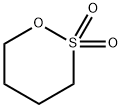
What is 1,4-Butane sultone?
Description
1,4-Butane sultone is an impurity in sulfobutyl ether β-cyclodextrin (SBE-β-CD), and has been reported to be a weak carcinogen. 1,4-Butane sultone can be used for preparation of Br?nsted acidic ionic liquids and the ionic liquid is green, highly water soluble, thermally stable, specific and catalytically stable, and can be used for the preparation of symmetrical 3,3'-diaryloxyoctanone compounds[1-2].
Chemical properties
Butanesultone is a viscous, clear, colourless – or yellowish/brown – and odourless liquid. When heated, vapours of butanesultone are known to form explosive mixtures with air and are reported to cause explosion hazards.
The Uses of 1,4-Butane sultone
1,4-Butane sultone serves as a reactant in the preparation of conjugated polymers, including polybetaine and poly[2-ethynyl-N-(4-sulfobutyl)pyridinium betaine] (PESPB). It is also utilized in the synthesis of Bronsted acid catalysts such as 4-(succinimido)-1-butane sulfonic acid and poly(4-vinylpyridinium butane sulfonic acid) hydrogen sulfate. These catalysts are known to facilitate the synthesis of 1-amidoalkyl-2-naphthols, substituted quinolines, and pyrano[4,3-b]pyran derivatives.
1,4-Butane sultone is an intermediate widely used in various applications, including the production of sulfonated surfactants and as an alkylating agent with weak carcinogenic activity. It finds use in photo development and electroplating processes and is also employed as an intermediate for the production of active pharmaceutical ingredients (APIs). Additionally, it is used in the synthesis of sulfobutylether-β-cyclodextrin (SEBCD).
Safety Profile
Suspected carcinogen with experimental tumorigenic data. Poison by subcutaneous, intravenous, and intraperitoneal routes. Moderately toxic by ingestion. Experimental reproductive effects. Human mutation data reported. See also SULFONATES. When heated to decomposition it emits toxic fumes of SOx
Synthesis
Performing sulfonation on 3-butylene-1-alcohol or 3-butylene-1-chlorine serving as a raw material and a sulfonating agent under the oxidation-reduction of an initiator;performing acidification after the reaction is finished;performing lactonization by high vacuum dehydration cyclization and azeotropic dehydration cyclization;and finally refining to obtain a 1,4-butane sultone finished product.
References
[1] LAYLA A. TAIB; Mosadegh K. Introduction of novel br?nsted acidic ionic liquids with perchlorate counter-anion for one-pot synthesis of symmetric 3,3′-diaryloxindoles[J]. Research on Chemical Intermediates, 2021. DOI:10.1007/s11164-021-04419-5.
[2] MENG WANG. Determination of Low-ppm Levels of 1,4-Butane Sultone in Sulfobutyl Ether β-Cyclodextrin Using Liquid–Liquid Extraction and GC–MS[J]. Chromatographia, 2012. DOI:10.1007/s10337-012-2275-8.
Properties of 1,4-Butane sultone
| Melting point: | 12-15 °C (lit.) |
| Boiling point: | >165 °C/25 mmHg (lit.) |
| Density | 1.331 g/mL at 25 °C (lit.) |
| refractive index | n |
| Flash point: | >230 °F |
| storage temp. | Store below +30°C. |
| solubility | 54g/l (decomposition) |
| form | Liquid |
| color | Clear colorless to yellow |
| Water Solubility | 54 g/L (20 ºC) decomposes |
| Sensitive | Moisture Sensitive |
| BRN | 110588 |
| CAS DataBase Reference | 1633-83-6(CAS DataBase Reference) |
| EPA Substance Registry System | 1,2-Oxathiane, 2,2-dioxide (1633-83-6) |
Safety information for 1,4-Butane sultone
| Signal word | Warning |
| Pictogram(s) |
 Exclamation Mark Irritant GHS07  Health Hazard GHS08 |
| GHS Hazard Statements |
H302:Acute toxicity,oral H315:Skin corrosion/irritation H317:Sensitisation, Skin H319:Serious eye damage/eye irritation H335:Specific target organ toxicity, single exposure;Respiratory tract irritation H351:Carcinogenicity |
| Precautionary Statement Codes |
P201:Obtain special instructions before use. P280:Wear protective gloves/protective clothing/eye protection/face protection. P301+P312:IF SWALLOWED: call a POISON CENTER or doctor/physician IF you feel unwell. P302+P352:IF ON SKIN: wash with plenty of soap and water. P305+P351+P338:IF IN EYES: Rinse cautiously with water for several minutes. Remove contact lenses, if present and easy to do. Continuerinsing. P308+P313:IF exposed or concerned: Get medical advice/attention. |
Computed Descriptors for 1,4-Butane sultone
| InChIKey | MHYFEEDKONKGEB-UHFFFAOYSA-N |
1,4-Butane sultone manufacturer
New Products
4,4-Difluoropiperidine hydrochloride tert-butyl 9-methoxy-3-azaspiro[5.5]undecane-3-carboxylate Indole Methyl Resin N-Isopropylurea N,N-Dicyclohexylcarbodiimide(DCC) MELDRUMS ACID 5-METHYLISOXAZOLE-4-CARBOXYLIC ACID Magnessium Bis glycinate Zinc ascorbate 1-bromo-2-butyne 2-acetamidophenol 9(10H)-anthracenone Erythrosin B, 4-Piperidinopiperidine 2-((4-morpholinophenylamino) (methylthio) methylene) malononitrile 2,4-dihydroxybenzaldehyde 3-(4-morpholinophenylamino)-5-amino-1H-pyrazole-4-carbonitrile Methyl 2-methylquinoline-6-carboxylate 2,6-dichloro-4-nitropyridine 4-Bromo-2-chlorobenzonitrile 2-(benzylamino)acetic acid hydrochloride 4-(tert-Butoxycarbonylamino)but- 2-ynoic acid 3,4-dihydro-2H-benzo[b][1,4]dioxepine 1-Phenyl-1-cycloprppanecarboxylicacidRelated products of tetrahydrofuran
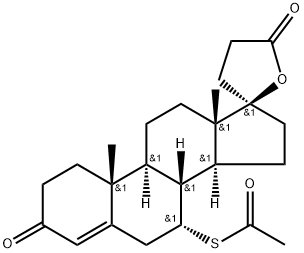
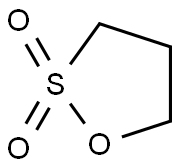

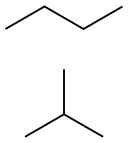
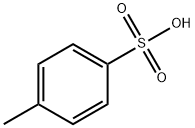


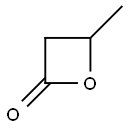
You may like
-
 1633-83-6 1,4-Butane Sultone 98%View Details
1633-83-6 1,4-Butane Sultone 98%View Details
1633-83-6 -
 1,4-Butane sultone >98%View Details
1,4-Butane sultone >98%View Details
1633-83-6 -
 1,4-Butanesultone CAS 1633-83-6View Details
1,4-Butanesultone CAS 1633-83-6View Details
1633-83-6 -
 1,4-Butanesultone CAS 1633-83-6View Details
1,4-Butanesultone CAS 1633-83-6View Details
1633-83-6 -
 1,4-Butanesultone CAS 1633-83-6View Details
1,4-Butanesultone CAS 1633-83-6View Details
1633-83-6 -
 1,4-Butane sultone CAS 1633-83-6View Details
1,4-Butane sultone CAS 1633-83-6View Details
1633-83-6 -
 1, 4 Butane Sultone CAS No: 1633-83-6View Details
1, 4 Butane Sultone CAS No: 1633-83-6View Details
1633-83-6 -
 Butane SultoneView Details
Butane SultoneView Details
1633-83-6
